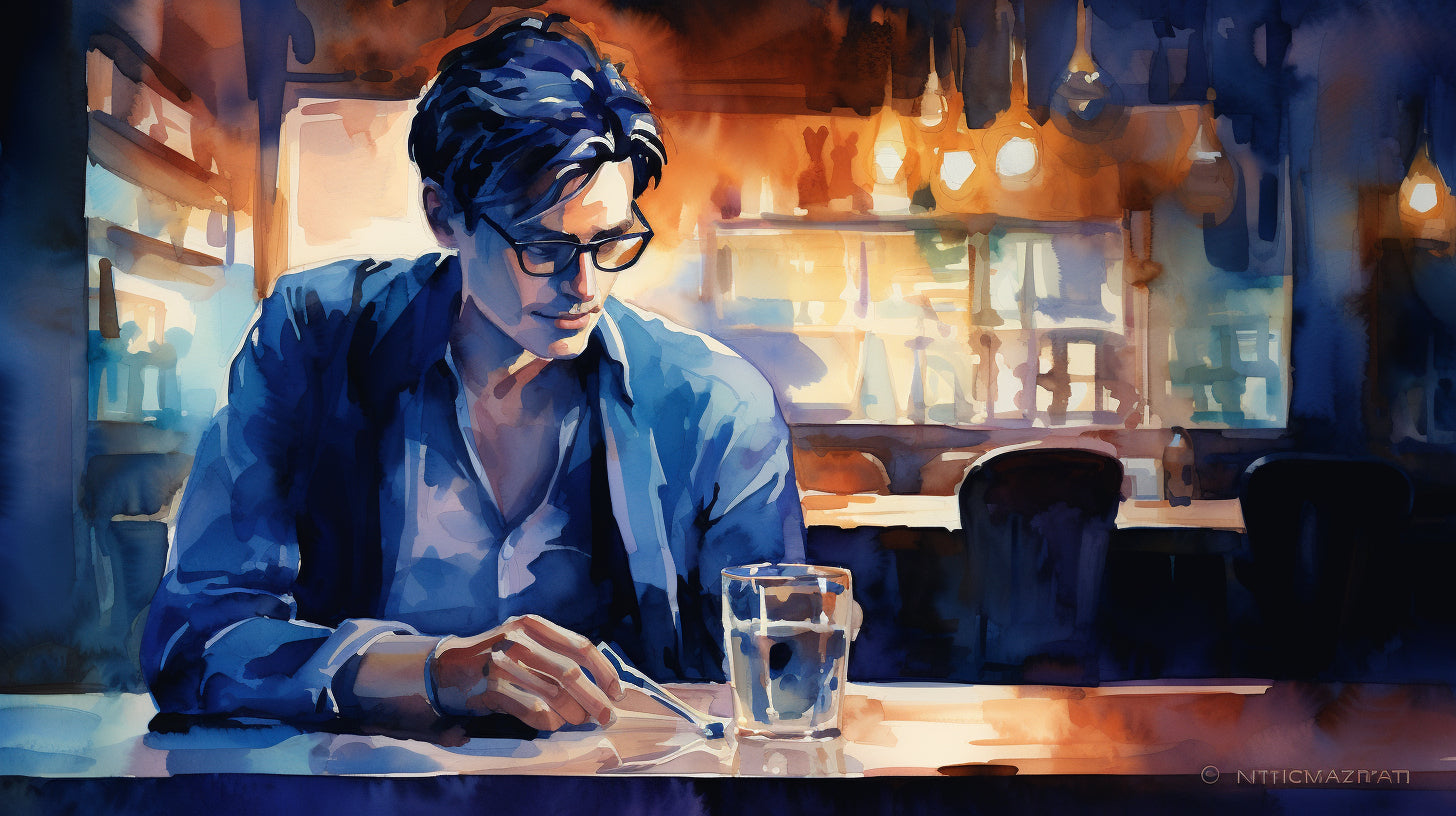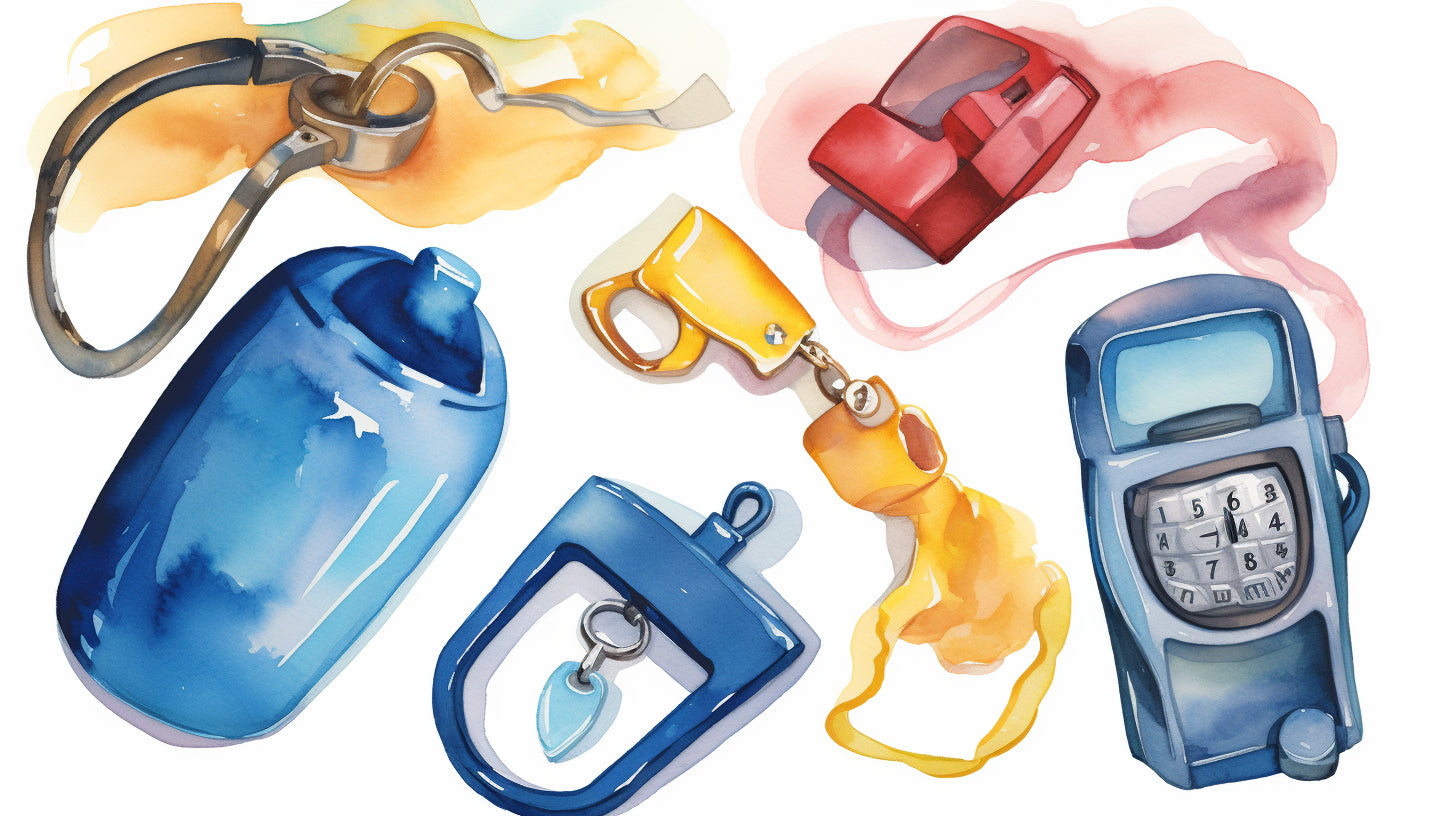Imagine being out for a drink with friends, and the next thing you know, you’re waking up with no memory of what happened. Incidences of drink spiking are becoming increasingly common and can happen to anyone, anywhere. If you think that it can't happen to you, think again. This is an invisible crime, committed covertly, with potentially dangerous consequences. But don't worry - this guide is packed with personal safety tips that can help safeguard you against the risk of drink spiking. By understanding its incidence, recognizing common methods, identifying high-risk places and demographics, understanding reporting pitfalls, and the aftermath, you can be more equipped to deal with this disturbing reality. So let's dive right in and illuminate this often whispered about, but rarely dissected topic.
Understanding Drink Spiking
Imagine this: you're out for a night of fun with friends, sipping on your favorite drink. Suddenly, you feel sick, your vision blurs, and everything paddles out of control. You might have just been a victim of drink spiking—a growing concern in society that we ought to face head-on.
Incidence and Prevalence
Statistically, this occurrence isn't as rare as we'd like it to be. In a relatively short period between September 2021 and June 2023, there were nearly 5,000 drink spiking incidents reported. It's a menacing act that's becoming disturbingly frequent, tarnishing the nightlife's gleaming fun.
Common Methods of Spiking
Drink spikers typically use potent drugs or excessive alcohol without the victim's knowledge. They might distract you with a friendly chat while dropping a disguised pill into your glass. Also, they often exploit situations where the victim leaves their drink unattended. It's therefore paramount to always keep an eye on your drink, accept gifts only from trusted individuals and use protective tools like drink covers.
Places with Higher Risk
While drink spiking can happen anywhere and at any time, it predominantly occurs in nightlife spots. Based on recent data, 50% of reported spiking incidents occurred in bars and clubs. Private homes weren't that safe either, accounting for 22% of cases, whereas pubs trailed at 14%. This locale-based trend should encourage us to adopt both personal and communal safeguards.
Victim Demographics
The demographics of drink spiking victims are quite diverse. However, a survey of over 900 people highlighted a worrying trend: women are more likely to report having their drinks spiked than men. This finding doesn't inadvertently exonerate men as non-targets of drink spiking but merely presents women's increased vulnerability. Therefore, regardless of your gender, vigilance should be everyone's companion during social gatherings.
Drink spiking is an intrusion into our social life, a violation that we need to actively discourage and eliminate. Awareness and understanding of this issue should be our first step toward personal safety and societal change. Refer to this guide on Understanding Drink Spiking, it's a critical resource in knowing, preventing, and combating this menacing act in our society.
Pitfalls of Reporting Drink Spiking to Authorities
Engaging with authorities could often feel like threading an intimidating labyrinth, especially in cases of highly sensitive violations like drink spiking. It is not uncommon to hit bumps on the road while dealing with such delicate issues. The cherry on this daunting cake comes from astounding facts such as one stating nearly 40% of people are apprehensive about reporting these incidents, fearing they wouldn't be trusted by the police. The next few paragraphs will explore some recurrent struggles faced by victims when they alert authorities about their horrifying spiking experiences.
Victims might encounter a wall of skepticism that hampers effective investigations. This skepticism isn't just disheartening to the victims but also creates an environment where perpetrators feel secure, continuing to engage in these criminal activities. The devastating impact of this disbelief among the authorities cannot be overstated.
- Victim-blaming is another significant stumbling block that causes hesitation among those willing to report such incidents. Comments insinuating that victims placed themselves in jeopardy can inflict psychological harm, adding insult to injury.
- The underlying stigmatization associated with alcohol and recreational drug use forms another problem. Authorities often judge the victims' behaviors or choices, focusing more on the victims' actions rather than the crime itself.
Victims also face documentation issues due to:
- Inaccurate recording of incidents
- Inadequate evidence collection process
- Inconsistencies in officially reporting drink spiking as a separate crime
In a quote from a leading criminologist, she emphasizes, "It is crucial that police appropriately report and record these offences. This helps in more accurate data collection and aids in devising more effective strategies to tackle this menace."
Above all, the lack of faith in the system stands out as a significant obstacle. As highlighted earlier, an astonishing 40% of people fear being disbelieved by the police. This lack of trust poses an alarming concern and can only be rectified with sensitization programs for the police and swift, just action. More about the unfolding realities of reporting drink spiking instances can be found here: reporting pitfalls.
Our society needs a shift in perspective, from victim-blaming to focusing on the crime committed. The first step to improving these interactions with authorities is to create an environment of trust and empathy, alongside strict adherence to protocols. Indeed, sensitizing the authorities to these concerns can pave the way towards ensuring swift and just action in such scenarios. This, in turn, could encourage more victims to come forward, helping society progress closer towards its fight against this crime.
Understanding and addressing these roadblocks can lead to better reporting systems, ultimately helping the authorities crack down on such criminal activities more effectively.
Potential Consequences of Drink Spiking
The world over, the chilling trend of drink spiking has cast a dark cloud over social environments, abruptly cutting short fun nights and leaving victims with horrid experiences. Violating a person's consent, this malicious act catapults unsuspecting merrymakers into a nightmare of unexpected consequences. Let's delve into the potential fallouts one might face due to drink spiking.
Sexual Assault
One of the most dreadful outcomes of drink spiking events is sexual assault. This nightmare scenario unfolds when the spiked substance, often a drug or excess alcohol, incapacitates the victim. Thus disoriented, they can easily fall prey to the predator's vile intentions. Victims often experience periods of unconsciousness or weakened physical response, during which they can't effectively resist or protest against the assault. This phenomenon is as heartbreaking as it is criminally invasive.
Robbery
Another common motivation for drink spiking is to rob the victim. Perpetrators exploit the victim's incapacitated state to steal valuable items like cash, jewelry, smartphones, or even confidential data. The unfortunate victim only realizes the loss once the effects of the spiked drink subside, making it difficult to trace the culprits or recover the stolen items.
Unsafe Sex
The third, equally worrying consequence is the risk of unsafe sex initiated by the offender after spiking the drink. Victims are left exposed to the risk of sexually transmitted infections (STIs), unwanted pregnancies, and the severe psychological trauma often linked to such circumstances.
The ordeal of drink-spiking victims underscore the inherent evil of this act. By allowing ourselves to be informed about and alert to this societal menace, we can shield ourselves and our loved ones from its potential consequences. Indeed, our collective vigilance can help deter this vile practice and make public spaces safer for all.
Preventive Measures to Counter Drink Spiking
Drink spiking, an illicit activity where someone adds drugs or alcohol to your drink without your knowledge, can have devastating consequences. Not only does it violate your trust, but it also poses a severe threat to your health and safety. Empowering yourself with preventive tactics is paramount to keep safe and minimise the risk of falling prey to such unethical deeds. Our purposeful guide provides three key strategies: enhancing personal awareness, adopting safe drinking habits, and proactively reporting suspicious activities.
Personal Awareness
Your personal awareness is your frontline defense against drink spiking. Regularly updating yourself with pertinent information, coupled with a keen observation, can go a long way in safeguarding yourself against potential dangers. Here are some guidelines to heighten your awareness:
- Always alert and watchful: Stay vigilant when you are in unfamiliar surroundings or amongst people you do not know well.
- Knowledge is power: Educate yourself and your friends about common drink spiking drugs and their effects.
- Trust your instincts: If something feels off, it probably is. Trusting your gut can often mitigate potential threats.
Safe Drinking Habits
Arguably, cultivating safe drinking habits plays a paramount role in preventing drink spiking incidents. Being responsible and watchful of your drinks may seem tedious, but this proactive step is a small price to pay for your safety. What can you do?
- Watch your drink: Keep an eye on your drink at all times. Avoid leaving it unattended, even for a short while.
- Be your bartender: Rather than accepting a drink from someone, it's safer to pour your own or to watch the bartender make it.
- Say 'no': Politely decline drinks you did not witness being made or drinks offered by strangers.
Reporting Suspicious Activities
An underrated yet highly effective deterrent to drink spiking is reporting any questionable activities or people you encounter. If you feel like your drink has been tampered with, or a friend seems unexpectedly intoxicated, it is vital to contact security personnel or even report to the police. Remember, your actions could potentially prevent another person from falling victim to drink spiking.
Inculcating these preventive measures can significantly reduce the chances of being a victim of drink spiking. While it is an unfortunate fact that we must protect ourselves from such activities, the assurance one gets in return for one's safety is boundless. Please refer to our guide #preventivemeasures that offers an in-depth discussion on each preventive measure, along with further tips to stay safe and informed.
By amalgamating personal awareness with safe drinking habits and a pro-active stance in reporting, we can foster an environment that discourages such detrimental actions. After all, a safe and memorable night out hinges on these factors.
Furthering the Conversation on Drink Spiking
Government's Role
The conversation on issues around drink spiking is never complete without involving the government's role in mitigating this societal menace. Despite existing measures, the problem persists. Some would even argue that it's on the rise, which calls for extra scrutiny on the sufficiency of existing legal frameworks and policies.
The government, as the institution in charge of citizen welfare and upholding justice, bears the primary responsibility of ensuring safe environments for all. This involves crafting practical legislation against drink spiking, swiftly prosecuting those who commit these offenses, and safeguarding potential victims.
Though effective legislative measures are key, tackling the drink spiking menace goes beyond enacting strict laws. It extends to diligently enforcing these laws. Enforcements could entail random spot checks in pubs and clubs or investing more resources in investigative units to easier apprehend perpetrators.
Moreover, the fight against drink spiking could greatly benefit from a more sympathetic legal and judicial framework. Often, victims shy away from reporting incidents due to fear of victim-blaming or criticisms. The government can ameliorate this by cultivating a culture that is empathetic to the plight of the victims and is committed to their protection and justice.
Let's delve deeper into how the government can engage in furthering the conversation on ending this heart-wrenching issue:
- Prioritize sensitization of law enforcement personnel to ensure victims are handled with care and dignity.
- Fast track legislation against spiking drinks, if it doesn't already exist, and apply harsher penalties for convicted culprits.
- Increase funding for initiatives aimed at raising awareness and prevention of drink spiking.
- Leverage technological advancements to nip the issue in the bud, for example, through the development of drink spiking detection devices.
Public Awareness Campaigns
While the government takes the front line in this fight, collective action reinforced by awareness campaigns is pivotal. Public awareness campaigns are vital tools in educating the masses about the prevalence and dangers of drink spiking.
Contrary to popular belief, public awareness campaigns are not merely about distributing informational brochures or launching rudimentary websites. They encompass well-thought-out strategies involving collaborations with high impact influencers, engaging media houses, and enlisting aid from local communities.
Furthermore, these campaigns can utilize social media's power to disseminate vital information swiftly and widely, offering tips on how to avoid becoming a victim, recognize signs of drink spiking, and steps to take if one suspects that their drink has been spiked.
"Remember, knowledge is power," as the wise saying goes, and in the case of drink spiking, knowledge empowers people to guard their wellbeing while enjoying their favourite beverages. However, despite the weight of this issue, data regarding the prevalence of drink spiking is noticeably scarce, which hinders comprehensive strategies in combating this problem.
Through furthering this conversation, we aim to illuminate this obscure issue, hoping to spark a lasting change towards safer social environments. Are you eager to join this cause? Let's engage further in the conversation, share experiences, and distribute helpful resources that can aid in eradicating this harmful practice.
Conclusion
Navigating the world should not have to feel like an obstacle course filled with hazards. We must always remember that safety is a fundamental right, not a privilege. Remaining vigilant, adopting safe drinking habits, and staying educated about potential threats like drink spiking can go a long way in ensuring not just our safety, but also the security of those around us.
But knowledge alone isn't always enough and that's where Empowered by Ashley steps in. Whether it's their personal safety alarms for emergencies or their unique drink-cover scrunchies that serve a dual purpose of style and safety, the brand continually strives to be our reliable partner in personal safety and empowerment. At the end of the day, Empowered by Ashley’s mantra revolves around one unbeatable fact: when you’re safeguarded – whether in personal or pet safety – you are indeed, empowered. Let's foster a culture where we care for each other, look out for each other, and stand up against potential threats to our safety as we move towards a safer world.
Frequently Asked Questions
-
What is drink spiking?
Drink spiking is the act of adding substances, such as drugs or alcohol, to someone's beverage without their knowledge or consent.
-
Why do people spike drinks?
Drink spiking can have various motivations, including sexual assault, robbery, bullying, or simply causing harm to the victim.
-
How can I protect myself from drink spiking?
To protect yourself from drink spiking, it is recommended to never accept drinks from strangers, keep your drink with you at all times, avoid leaving your drink unattended, and consider using drink test kits or bottle cap alarm devices.
-
What are the common signs of drink spiking?
Common signs of drink spiking include feeling extremely intoxicated or disoriented despite consuming a small amount of alcohol, dizziness, nausea, memory loss, difficulty speaking or moving, and loss of consciousness.
-
What should I do if I suspect my drink has been spiked?
If you suspect your drink has been spiked, it is important to seek help immediately. Find a trusted friend or staff member, stop drinking your beverage, and consider contacting the police or seeking medical attention for further assistance.




















Leave a comment
This site is protected by hCaptcha and the hCaptcha Privacy Policy and Terms of Service apply.